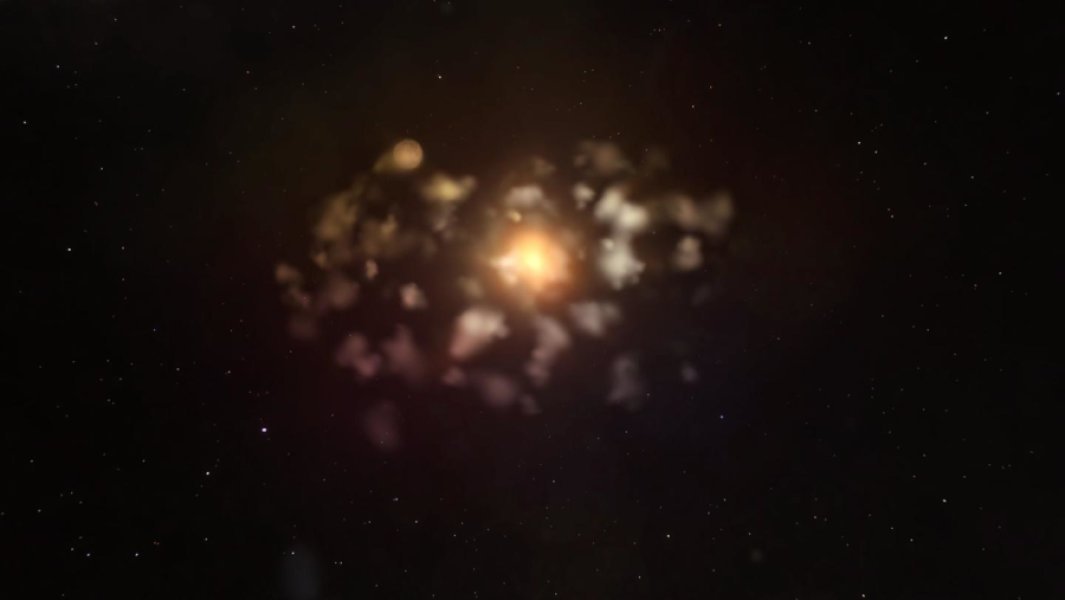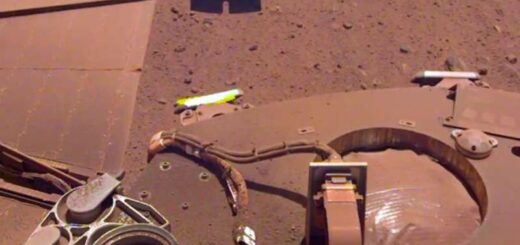Star RZ Piscium In Constellation Pisces Is Busy Consuming Its ‘Offspring’
A few days ago, we reported about white dwarfs growing bigger and bigger by sucking in mass from the outer layers of their companion stars.
Another star has also certain ‘feeding habits’. The star RZ Piscium – located about 550 light-years away in the constellation Pisces – is slowly consuming surrounding planets.

a “disrupted planet” slowly broken up into a cloud of gas and dust as it orbits the star RZ Piscium about 550 light years from Earth. Credit: NASA’s Goddard Space Flight Center/CI Lab
Astronomers say the discovery may shed light on a brief but volatile period in the history of many solar systems, including our own.
“We know it’s not uncommon for planets to migrate inward in young solar systems since we’ve found so many solar systems with ‘hot Jupiters’ — gaseous planets similar in size to Jupiter but orbiting very close to their stars,” said Indiana University astronomer, Catherine Pilachowski, co-author of the study.
“This is a very interesting phase in the evolution of planetary systems, and we’re lucky to catch a solar system in the middle of the process since it happens so quickly compared to the lifetimes of stars.”
Doomed worlds that fly too close to their sun — only to be ripped apart by its tidal forces — are officially known as “disrupted planets.”
In the case of RZ Piscium, the material near the sun-like star is being slowly pulled apart to create a small circle of debris about the same distance from the star as the planet Mercury’s orbit is from our sun.
“Based on our observations, it seems either that we’re seeing a fairly massive, gaseous planet being pulled apart by the star, or perhaps two gas-rich planets that have collided and been torn apart,” Pilachowski said.
See also:
‘Feeding Habits’ Of White Hungry Dwarf Stars – New Discovery
The observation helped shed light on the star’s radius and brightness, both of which suggest a young star in the midst of a freewheeling solar system with unstable planets.
The study’s authors also found the star’s temperature to be about 9,600 degrees Fahrenheit (5,330 degrees Celsius) — only slightly cooler than our sun’s. Another sign of the star’s relative youth: It produces X-rays at a rate roughly 1,000 times greater than our sun.
Pilachowski’s analysis of the star’s light also helped determine the amount of lithium in the star, marking the star as a relatively young 30 million to 50 million years. Astronomers can use lithium levels to estimate a star’s age because the element declines over time.
“This discovery really gives us a rare and beautiful glimpse into what happens to many newly formed planets that don’t survive the early dynamical chaos of young solar systems,” Pilachowski said. “It helps us understand why some young solar systems survive — and some don’t.”
Study is published in The Astronomical Journal.



 Creators of mankind
Creators of mankind Description of “Tall white aliens”
Description of “Tall white aliens” Where they came from?
Where they came from? About hostile civilizations
About hostile civilizations The war for the Earth
The war for the Earth “Tall white aliens” about eternal life
“Tall white aliens” about eternal life Video: “Nordic aliens”
Video: “Nordic aliens” Aliens
Aliens Alien encounters
Alien encounters The aliens base
The aliens base UFO
UFO Technology UFO
Technology UFO Underground civilization
Underground civilization Ancient alien artifacts
Ancient alien artifacts Military and UFO
Military and UFO Mysteries and hypotheses
Mysteries and hypotheses Scientific facts
Scientific facts


















